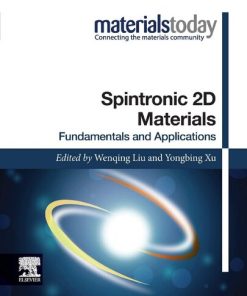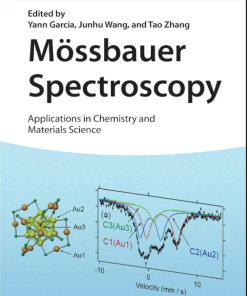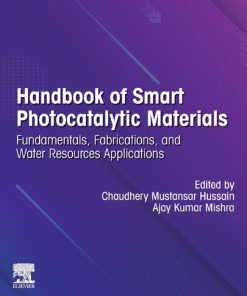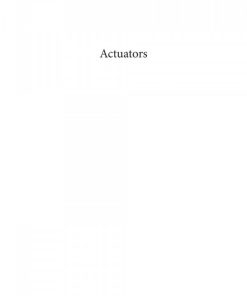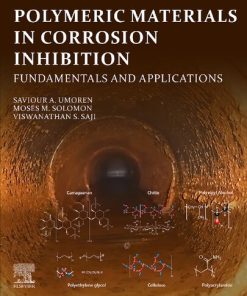(EBook PDF) Chemistry of Functional Materials Surfaces and Interfaces Fundamentals and Applications 1st edition by Andrei Honciuc 0128231939 9780128231937 full chapters
$50.00 Original price was: $50.00.$25.00Current price is: $25.00.
Chemistry of Functional Materials Surfaces and Interfaces: Fundamentals and Applications 1st edition by Andrei Honciuc – Ebook PDF Instant Download/DeliveryISBN: 0128231939, 9780128231937
Full download Chemistry of Functional Materials Surfaces and Interfaces: Fundamentals and Applications 1st edition after payment
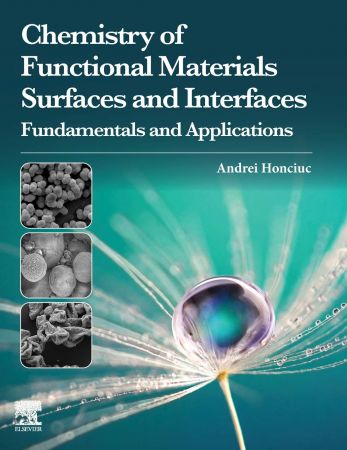
Product details:
ISBN-10 : 0128231939
ISBN-13 : 9780128231937
Author: Andrei Honciuc
Chemistry of Functional Materials Surfaces and Interfaces: Fundamentals and Applications gives a descriptive account of interfacial phenomena step-by-step, from simple to complex, to provide readers with a strong foundation of knowledge in interfacial materials chemistry. Many case studies are provided to give real-world examples of problems and their solutions, allowing readers to make the connection between fundamental understanding and applications. Emerging applications in nanomaterials and nanotechnology are also discussed.
Chemistry of Functional Materials Surfaces and Interfaces: Fundamentals and Applications 1st Table of contents:
Chapter 1: Introduction
Chapter 2: Thermal energy scale kT
Abstract
Chapter 3: Surfaces and interfaces
Abstract
3.1: Surface tension of liquids
3.2: Predictive models for calculating the surface tension of liquids
3.3: Interfacial tension between liquids
3.4: Relating surface tension to surface energy
3.5: Surface and interfacial energy of solids
3.6: Solid-liquid interfaces
3.7: Scaling effects: When surface tension dominates gravity
3.8: Capillary rise
3.9: Capillary number
3.10: Kelvin equation
3.11: Case study: Surface tension of liquids at the nanoscale and in nanopores
3.12: Methods for measuring the surface and interfacial tensions of liquids
3.13: Measuring ultralow interfacial tension—The spinning drop tensiometer
3.14: Surface and interfacial tensions with temperature
Chapter 4: Surfactants and amphiphiles
Abstract
4.1: Introduction
4.2: Brief historical account of surfactants
4.3: Major classes of surfactants
4.4: Other important classes of surfactants
4.5: Self-assembly of surfactants
4.6: Case study: An intuitive understanding of the structure-activity relationship in surfactants
4.7: Supra-amphiphiles
4.8: Surfactants and the environment
Chapter 5: Wettability of surfaces, nanoparticles, and biomimetic functional surfaces
Abstract
5.1: Contact angle of liquids on macroscopic surfaces
5.2: Classification of surface hydrophobicity vs. the magnitude of the contact angle with water
5.3: Dynamic, advancing, and receding contact angle
5.4: Contact angle hysteresis
5.5: Wettability of liquids on rough and nanostructured surfaces—Wenzel model
5.6: Wettability of liquids on heterogeneously flat surfaces—Cassie-Baxter model
5.7: Transition from Cassie-Baxter to Wenzel state
5.8: Roll-off and sliding angles of a sessile droplet
5.9: Measurement of the contact angle with the captive bubble method
5.10: Natural and biomimetic functional surfaces
5.11: Adhesion of cells on rough and nanostructured surfaces
5.12: Spreading and superspreading in the presence of surfactants
5.13: Contact angle of micro- and nanoparticles
Chapter 6: The fundamental equations of interfaces
Abstract
6.1: The thermodynamic perspective—Energy of adhesion
6.2: Fowkes’ model for the energy of adhesion
6.3: Owens, Wendt, Rabel, and Kaelble (OWRK) method
6.4: Girifalco-Good equation of state
6.5: Neumann’s equation of state
6.6: Van Oss, Choudhury, and Good (OCG) model
6.7: Fox-Zisman model
6.8: Case study: Usefulness of interfacial models in applications
6.9: Case study: Wetting envelope
6.10: Case study: Pickering emulsions and energy of adhesion of nanoparticles to immiscible phases
Chapter 7: Elements of thermodynamics of interfaces
Abstract
7.1: Gibbs-Duhem equation for interfaces
7.2: Gibbs adsorption isotherm
7.3: Choice of the boundary thickness, Gibbs dividing line, and excess function
7.4: Interfacial adsorption isotherms and surface tension
Chapter 8: Populated interfaces and their reactivity
Abstract
8.1: Partitioning of solute between immiscible phases
8.2: Partitioning and adsorption at liquid interfaces
8.3: Soluble films—Gibbs monolayers
8.4: Insoluble films—Langmuir monolayers
8.5: Langmuir-Blodgett monolayers—Manipulation of a monolayer of molecules
8.6: Self-assembled monolayers
Chapter 9: Metal-organic interfaces in organic and unimolecular electronics
Abstract
9.1: Energy levels at metal-organic interfaces
9.2: Electron transport across metal-organic interface
9.3: Basic organic electronic devices and their metal-organic interfaces
9.4: Role of interfacial tension in organic electronic devices
9.5: Unimolecular electronics
Chapter 10: Main interaction forces between molecules and interfaces
Abstract
10.1: van der Waals interactions between molecules and between interfaces
10.2: Hydrogen bonding
10.3: Dipole-dipole interactions
10.4: Hydrophobic interaction
10.5: Repulsive hydration force
10.6: Hildebrand and Hansen solubility parameters
10.7: Flory-Huggins interaction parameter
Chapter 11: Interactions between electrically charged interfaces
Abstract
11.1: Electric double layer
11.2: Distribution of counterions in the absence of electrolyte
11.3: Distribution of counterions around a charged surface in the presence of electrolyte
11.4: Grahame equation and Debye length
11.5: Double-layer interaction forces and energies
11.6: DLVO theory
11.7: Zeta potential
11.8: Case study: Constructing the interaction potentials between nanoparticles with DLVO and non-DLVO forces
Chapter 12: Colloids and nanoparticles
Abstract
12.1: Lyophobic colloids
12.2: Preparation of the lyophobic colloids
12.3: Preparation of colloids by solvent replacement and physical condensation
12.4: Chemical synthesis of lyophobic colloids
12.5: Interfacial forces and stability of lyophobic colloids
12.6: Lyophilic colloids
Chapter 13: Role of interfaces in the synthesis of polymeric nanoparticles and nanostructured materials
Abstract
13.1: Case study: Synthesis of polymeric nanoparticles via emulsion polymerization
13.2: Case study: Synthesis of nanostructured materials from Pickering emulsions
Chapter 14: Adsorption and interaction of particles at interfaces
Abstract
14.1: Adsorption of nanoparticles at interfaces
14.2: Interfacial adsorption dynamics and mechanism
14.3: Interaction between nanoparticles at interfaces
14.4: Langmuir-Blodgett assembly of nanoparticles into 2D crystals
14.5: Templated self-assembly of nanoparticles at interfaces
Chapter 15: A short account of the role of interfaces in Integrated Circuits manufacturing
Abstract
15.1: Introduction of photolithography and Integrated Circuits manufacturing
15.2: Role of interfaces in photolithography
People also search for Chemistry of Functional Materials Surfaces and Interfaces: Fundamentals and Applications 1st:
what are functional materials
what are chemical materials
examples of functional materials
chemistry of materials submission
chemistry of materials impact factor
Tags:
Andrei Honciuc,Chemistry,Functional Materials,Surfaces,Interfaces,Fundamentals,Applications,Andrei Honciuc
You may also like…
Engineering
Chemistry - Physical Chemistry
Oxygen Reduction Reaction : Fundamentals, Materials, and Applications 1st edition Kushal Sengupta
Chemistry - Physical Chemistry




